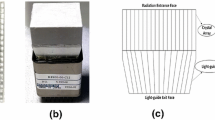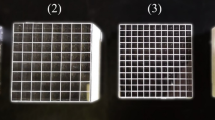Abstract
To fully utilize positron emission tomography (PET) as a non-invasive tool for tissue characterization, dedicated instrumentation is being developed which is specially suited for imaging mice and rats. Semiconductor detectors, such as avalanche photodiodes (APDs), may offer an alternative to photomultiplier tubes for the readout of scintillation crystals. Since the scintillation characteristics of lutetium oxyorthosilicate (LSO) are well matched to APDs, the combination of LSO and APDs seems favourable, and the goal of this study was to build a positron tomograph with LSO-APD modules to prove the feasibility of such an approach. A prototype PET scanner based on APD readout of small, individual LSO crystals was developed for tracer studies in mice and rats. The tomograph consists of two sectors (86 mm distance), each comprising three LSO-APD modules, which can be rotated for the acquisition of complete projections. In each module, small LSO crystals (3.7×3.7×12 mm3) are individually coupled to one channel within matrices containing 2×8 square APDs (2.6×2.6 mm2 sensitive area per channel). The list-mode data are reconstructed with a penalized weighted least squares algorithm which includes the spatially dependent line spread function of the tomograph. Basic performance parameters were measured with phantoms and first experiments with rats and mice were conducted to introduce this methodology for biomedical imaging. The reconstructed field of view covers 68 mm, which is 80% of the total detector diameter. Image resolution was shown to be 2.4 mm within the whole reconstructed field of view. Using a lower energy threshold of 450 keV, the system sensitivity was 350 Hz/MBq for a line source in air in the centre of the field of view. In a water-filled cylinder of 4.6 cm diameter, the scatter fraction at the centre of the field of view was 16% (450 keV threshold). The count rate was linear up to 700 coincidence counts per second. In vivo studies of anaesthetized rats and mice showed the feasibility of in vivo imaging using this PET scanner. The first LSO-APD prototype tomograph has been successfully introduced for in vivo animal imaging. APD arrays in combination with LSO crystals offer new design possibilities for positron tomographs with finely granulated detector channels.
Similar content being viewed by others
Author information
Authors and Affiliations
Additional information
Received 25 August and in revised form 24 October 2000
Electronic Publication
Rights and permissions
About this article
Cite this article
Ziegler, S.I., Pichler, B.J., Boening, G. et al. A prototype high-resolution animal positron tomograph with avalanche photodiode arrays and LSO crystals. Eur J Nucl Med 28, 136–143 (2001). https://doi.org/10.1007/s002590000438
Published:
Issue Date:
DOI: https://doi.org/10.1007/s002590000438




